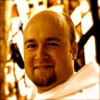Especially in church music, there is an often uneasy relationship between guitarists and keyboardists. Some regard guitar playing as imprecise or simple-minded. And in return some regard keyboard playing as unfeeling or convoluted. But the needs of the church do not afford us the indulgence of mutual skepticism. The Church is recognizing that we need assembly song that is conceived both with guitar accompaniment and with keyboard accompaniment. Yet most church musicians are still trained as keyboardists, and are taught to play guitar-based music by transferring it to piano. This has benefits (autonomy & control) and drawbacks (a different feel & the lost opportunity to open leadership possibilities). Often the solution is to cross the lines of skepticism and embrace your ally, the guitarist.
“Guitarist” can mean a lot of things, and can indicate a wide range of abilities and styles. But the piano & guitar combination can work with most of them. In my experience, steel-string acoustic guitars tend to work better than either “classical” nylon-string acoustic guitars (which tend to be overwhelmed by piano) or electric guitars (which easily sound “out of place” without drums).
The first thing a pianist ought to be aware of is the range in which the guitar will typically play. Here are open strings and the basic range of a guitar when playing standard chords.
(Note: The guitar is a transposing instrument. It reads treble clef, but plays an octave below. These examples are in concert pitch on the grand staff.
Also, guitar playing is built around basic chord shapes. These are the five main shapes, which get transposed and/or modified to form other chords. It is worth remembering these voicings, since pianists have many more options than guitars.
(Note: The small notes are other easy chord tones that are sometimes played, either intentionally or not. Sometimes, especially in folk music, the G chord is played without the third.)
You should be able to rely on even a novice guitarist to play these chords based on the main shapes: A, Am, C, D, Dm, E, Em, F, G. Most guitarists also have A7, Bm, B7, C7, D7, E7, F#m, and often C#m. This will get them through most songs (guitarists usually ignore any altered bass), as long as they have a capo. A capo is a clamp that functions like an electric organ’s “transpose” button that only transposes up, and cannot be changed in the middle of a song. Many guitarists do not “translate” quickly enough to use a capo, while reading in concert pitch. So, you probably need to write out the transposed “capo” chords if the printed chords are outside of this list.
As you prepare to lead song, remember – the guitarist is your ally! And (hopefully) you can rely on her to bear some of the load you are used to carrying all by yourself. There are three main “jobs” in leading assembly song: reinforcing the melody, keeping a steady rhythm and providing a harmonic foundation. A fourth, auxiliary “job” can be ornamenting the music. Remember that a guitar, especially when strummed, is as much a percussion instrument as a string instrument. And so usually, a guitar will play rhythm with you. This means you are freed from having to realize the full chords or play all of the inner voices, and can provide some ornamentation or pay special attention to the singing of the assembly. Alternately, amplified guitars (either acoustic or electric) have enough sustain and presence to reinforce melody and provide ornamentation. However you divide the roles, communicate about which jobs the two of you will take. And you and your ally will help the people sing to the glory of God.
One final note:
You must always make sure that the printed chords match the piano notes. Despite the best efforts of publishers, guitar chords are often wrong! And the chords in the ELW Guitar Accompaniment Edition: Service Music and Hymns match the Simplified Keyboard Accompaniment Edition: Service Music and Hymns, rather than the regular Accompaniment Edition: Service Music and Hymns. No matter the source, if there is a discrepancy, write in the right chord or change the piano notes. (Most church composers have not embraced bi-tonalism.)






